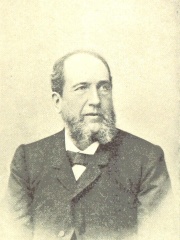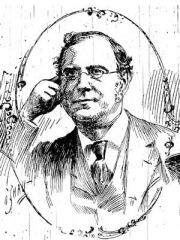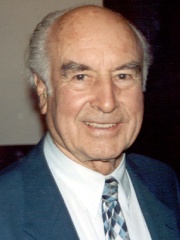
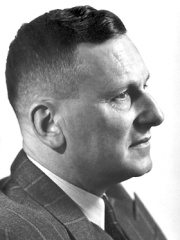
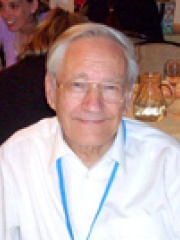
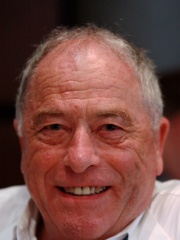
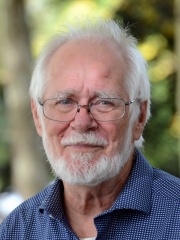
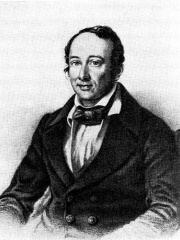
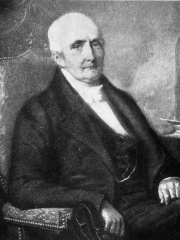
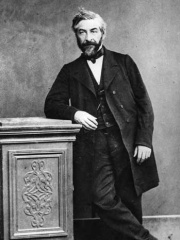
The Most Famous
CHEMISTS from Switzerland
This page contains a list of the greatest Swiss Chemists. The pantheon dataset contains 602 Chemists, 13 of which were born in Switzerland. This makes Switzerland the birth place of the 8th most number of Chemists behind Russia, and Sweden.
Top 10
The following people are considered by Pantheon to be the top 10 most legendary Swiss Chemists of all time. This list of famous Swiss Chemists is sorted by HPI (Historical Popularity Index), a metric that aggregates information on a biography's online popularity. Visit the rankings page to view the entire list of Swiss Chemists.

1. Albert Hofmann (1906 - 2008)
With an HPI of 74.84, Albert Hofmann is the most famous Swiss Chemist. His biography has been translated into 64 different languages on wikipedia.
Albert Hofmann (11 January 1906 – 29 April 2008) was a Swiss chemist known for being the first to synthesize, ingest, and learn of the psychedelic effects of lysergic acid diethylamide (LSD). Hofmann's team also isolated, named and synthesized the principal psychedelic mushroom compounds psilocybin and psilocin. Hofmann discovered the structure of chitin in 1929. He authored more than 100 scientific articles and numerous books, including LSD: Mein Sorgenkind (LSD: My Problem Child). In 2007, he shared first place with Tim Berners-Lee on a list of the 100 greatest living geniuses published by The Daily Telegraph.

2. Paul Hermann Müller (1899 - 1965)
With an HPI of 73.40, Paul Hermann Müller is the 2nd most famous Swiss Chemist. His biography has been translated into 55 different languages.
Paul Hermann Müller, also known as Pauly Mueller (12 January 1899 – 13 October 1965), was a Swiss chemist who received the 1948 Nobel prize in Physiology or Medicine for his 1939 discovery of insecticidal qualities and use of DDT in the control of vector diseases such as malaria and yellow fever.

3. Richard R. Ernst (1933 - 2021)
With an HPI of 72.24, Richard R. Ernst is the 3rd most famous Swiss Chemist. His biography has been translated into 60 different languages.
Richard Robert Ernst (14 August 1933 – 4 June 2021) was a Swiss physical chemist and Nobel laureate. Ernst was awarded the Nobel Prize in Chemistry in 1991 for his contributions towards the development of Fourier transform nuclear magnetic resonance (NMR) spectroscopy while at Varian Associates and ETH Zurich. These underpin applications to both to chemistry with NMR spectroscopy and to medicine with magnetic resonance imaging (MRI). He humbly referred to himself as a "tool-maker" rather than a scientist.

4. Kurt Wüthrich (b. 1938)
With an HPI of 71.78, Kurt Wüthrich is the 4th most famous Swiss Chemist. His biography has been translated into 57 different languages.
Kurt Wüthrich (born 4 October 1938 in Aarberg, Canton of Bern) is a Swiss chemist/biophysicist and Nobel Chemistry laureate, known for developing nuclear magnetic resonance (NMR) methods for studying biological macromolecules.
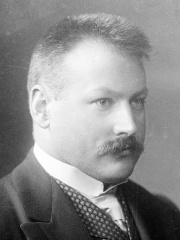
5. Emil Abderhalden (1877 - 1950)
With an HPI of 67.68, Emil Abderhalden is the 5th most famous Swiss Chemist. His biography has been translated into 38 different languages.
Emil Abderhalden (9 March 1877 – 5 August 1950) was a Swiss biochemist and physiologist. His main findings, though disputed already in the 1910s, were not finally rejected until the late 1990s. Whether his misleading findings were based on fraud or simply the result of a lack of scientific rigour remains unclear. Abderhalden's drying pistol, used in chemistry, was first described by one of his students in a textbook Abderhalden edited.

6. Jacques Dubochet (b. 1942)
With an HPI of 67.65, Jacques Dubochet is the 6th most famous Swiss Chemist. Her biography has been translated into 46 different languages.
Jacques Dubochet (born 8 June 1942) is a retired Swiss biophysicist. He is a former researcher at the European Molecular Biology Laboratory in Heidelberg, Germany, and an honorary professor of biophysics at the University of Lausanne in Switzerland. In 2017, he received the Nobel Prize in Chemistry together with Joachim Frank and Richard Henderson "for developing cryo-electron microscopy for the high-resolution structure determination of biomolecules in solution". He received the Royal Photographic Society Progress Medal, alongside his colleagues Professor Joachim Frank and Dr Richard Henderson, in 2018 for 'an important advance in the scientific or technological development of photography or imaging in the widest sense'.

7. Germain Henri Hess (1802 - 1850)
With an HPI of 65.62, Germain Henri Hess is the 7th most famous Swiss Chemist. His biography has been translated into 27 different languages.
Germain Henri Hess (Russian: Герман Иванович Гесс, romanized: German Ivanovich Gess; 7 August 1802 – 12 December [O.S. 30 November] 1850) was a Swiss-Russian chemist and doctor who formulated Hess' law, an early principle of thermochemistry.

8. Nicolas Théodore de Saussure (1767 - 1845)
With an HPI of 65.26, Nicolas Théodore de Saussure is the 8th most famous Swiss Chemist. His biography has been translated into 21 different languages.
Nicolas-Théodore de Saussure (French pronunciation: [nikɔla teɔdɔʁ də sosyʁ]; 14 October 1767 – 18 April 1845) was a Swiss chemist and student of plant physiology who made seminal advances in phytochemistry. He is one of the major pioneers in the study of photosynthesis.

9. Jean Charles Galissard de Marignac (1817 - 1894)
With an HPI of 63.04, Jean Charles Galissard de Marignac is the 9th most famous Swiss Chemist. His biography has been translated into 25 different languages.
Jean Charles Galissard de Marignac (24 April 1817 – 15 April 1894) was a Swiss chemist whose work with atomic weights suggested the possibility of isotopes and the packing fraction of nuclei. His study of the rare earth elements led to his discovery of ytterbium in 1878 and co-discovery of gadolinium in 1880. He was considered "one of the great chemists of the nineteenth century", particularly in the area of inorganic chemistry. On 13 September 2011, the site of his laboratory at the University of Geneva was designated a historical chemical landmark of Switzerland.
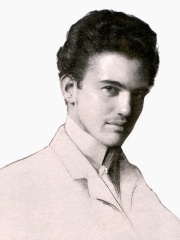
10. Victor Goldschmidt (1888 - 1947)
With an HPI of 62.25, Victor Goldschmidt is the 10th most famous Swiss Chemist. His biography has been translated into 32 different languages.
Victor Moritz Goldschmidt (27 January 1888 – 20 March 1947) was a Norwegian-Jewish mineralogist considered (together with Vladimir Vernadsky) to be the founder of modern geochemistry and crystal chemistry, developer of the Goldschmidt Classification of elements.
People
Pantheon has 13 people classified as Swiss chemists born between 1767 and 1942. Of these 13, 2 (15.38%) of them are still alive today. The most famous living Swiss chemists include Kurt Wüthrich, and Jacques Dubochet. The most famous deceased Swiss chemists include Albert Hofmann, Paul Hermann Müller, and Richard R. Ernst.
Living Swiss Chemists
Go to all RankingsDeceased Swiss Chemists
Go to all RankingsAlbert Hofmann
1906 - 2008
HPI: 74.84
Paul Hermann Müller
1899 - 1965
HPI: 73.40
Richard R. Ernst
1933 - 2021
HPI: 72.24
Emil Abderhalden
1877 - 1950
HPI: 67.68
Germain Henri Hess
1802 - 1850
HPI: 65.62
Nicolas Théodore de Saussure
1767 - 1845
HPI: 65.26
Jean Charles Galissard de Marignac
1817 - 1894
HPI: 63.04
Victor Goldschmidt
1888 - 1947
HPI: 62.25
Jacques-Louis Soret
1827 - 1890
HPI: 59.29
Albert Eschenmoser
1925 - 2023
HPI: 55.77
Marc Delafontaine
1838 - 1911
HPI: 55.22
Overlapping Lives
Which Chemists were alive at the same time? This visualization shows the lifespans of the 9 most globally memorable Chemists since 1700.

